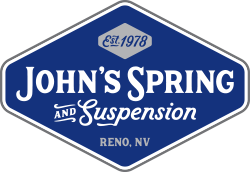Heavy-duty trucks face some of the toughest road conditions, especially in Northern Nevada where steep grades, extreme weather, and rugged terrain put constant stress on vehicles. Among the most frequent challenges drivers encounter are suspension problems, which can compromise safety, reduce performance, and lead to expensive repairs if left unchecked. Understanding these issues is crucial to maintaining optimal performance of trucks, trailers, and fleets.
Understanding Suspension Problems in Heavy-Duty Trucks
The suspension system in a heavy-duty truck is designed to absorb shocks, maintain stability, and ensure proper weight distribution across the axles. When components wear out or fail, the result is more than just an uncomfortable ride. Faulty systems can lead to reduced control, uneven tire wear, and strain on other mechanical parts. Common truck suspension issues in this region include worn leaf springs, broken shocks, cracked bushings, and damaged U-bolts. Given the demanding loads and rough conditions, these problems appear faster than many drivers expect.
Signs of Bad Leaf Springs Every Driver Should Know
One of the most frequent issues in Northern Nevada’s heavy-duty trucks is leaf spring wear. These essential components support massive weight, absorb impact, and stabilize loads. When they begin to fail, the signs of bad leaf springs are often visible and noticeable while driving. Sagging on one side of the truck, clunking noises, uneven tire wear, and difficulty handling loads are red flags that drivers should never ignore. Left unaddressed, damaged springs can break entirely, creating unsafe driving conditions and risking complete suspension failure.
Why Is My Trailer Bouncing? Common Causes Explained
Many truck owners also struggle with trailer performance, particularly excessive bouncing on highways or rough surfaces. This problem usually points to weakened shocks, overloaded trailers, or worn suspension parts. Unevenly distributed cargo, mismatched tires, and damaged leaf springs can also worsen the issue. Trailer bouncing not only shortens tire life but also increases stress on the truck’s hitch and frame. For drivers pulling heavy loads across Nevada’s long, uneven roads, these problems reduce efficiency and control. Addressing them early helps maintain smoother rides and protects valuable equipment.
The Role of Regular Suspension Inspections
Preventing major breakdowns starts with proactive maintenance. A thorough suspension inspection ensures that small problems are identified before they escalate into costly repairs. Inspections typically cover leaf springs, U-bolts, bushings, shocks, and alignment. By checking for cracks, rust, or misalignment, technicians can recommend timely replacements or adjustments. For heavy-duty trucks in Northern Nevada, where high mileage and rugged routes accelerate wear, scheduling inspections every few months is critical. This proactive step not only saves money but also keeps drivers and cargo safe on long hauls.
How to Prevent Costly Truck Suspension Issues
While no suspension system lasts forever, drivers and fleet managers can take practical steps to extend their trucks’ lifespan. Regular lubrication of bushings and joints, avoiding overloads, and distributing cargo evenly all reduce stress on suspension components. Installing quality replacement parts and working with experienced technicians also make a significant difference. Preventive measures lower the risk of roadside breakdowns, unexpected downtime, and expensive towing fees. With consistent care, fleets can operate more efficiently and avoid recurring suspension failures that disrupt schedules and business operations.
Key Takeaways for Northern Nevada Truck Drivers
Heavy-duty trucks in Northern Nevada endure unique challenges that accelerate wear on suspension systems. From failing leaf springs to bouncing trailers, these problems compromise safety, comfort, and reliability. Understanding early warning signs, investing in regular inspections, and practicing preventive maintenance are the best ways to stay ahead of costly breakdowns. By taking action before problems worsen, truck owners can extend the life of their vehicles, protect their investment, and ensure every mile on the road is safer and more efficient.



